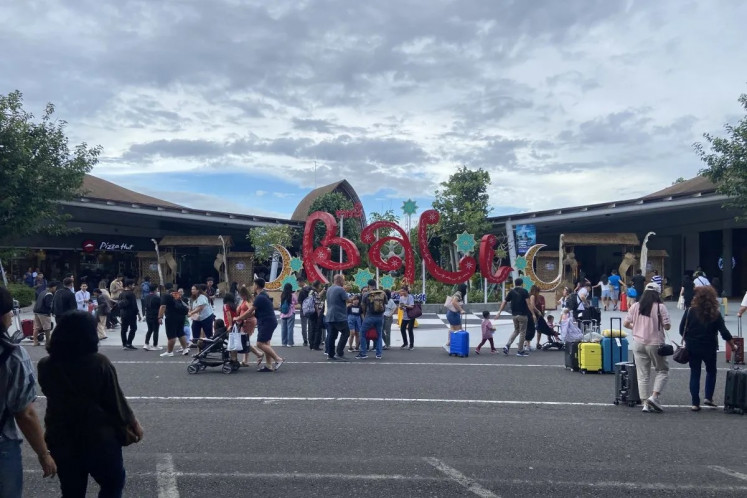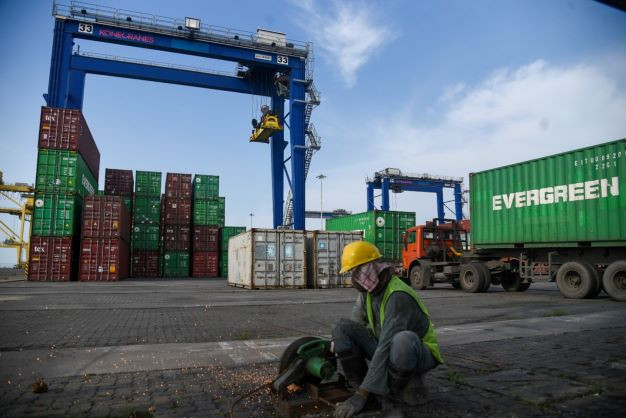More seismic studies could save lives
Heal your mind: Activists of humanitarian organization Aksi Cepat Tanggap hold a trauma healing program for victims of a 7
Change Size

H
eal your mind: Activists of humanitarian organization Aksi Cepat Tanggap hold a trauma healing program for victims of a 7.0-magnitude earthquake that hit Lombok, in Mataram, West Nusa Tenggara, on Friday. (JP/Seto Wardhana)
Lalu Thamrin Abdullah, 39, recalled the strong tremors from a 7.0-magnitude earthquake that jolted Lombok, West Nusa Tenggara (NTB), last week and led to chaos in his hometown of Mataram, the provincial capital.
“People took off in their vehicles, others ran through the streets trying to save themselves from a potential tsunami, because there was no clear guidance,” he told The Jakarta Post recently.
A similar concern was shared by many residents who, like Thamrin, rushed to higher ground or into the open air in panic and confusion, fearing that a tsunami could follow the earthquake that occurred only a week after a 6.4-magnitude quake shocked the island.
“I know nothing about earthquake mitigation,” Muhammad Amin, 42, who lived in Gunungsari district in West Lombok, said.
Lombok has decided to extend its earthquake emergency status for another 14 days, from Sunday to Aug. 25, to help boost disaster mitigation efforts amid lingering problems such as infrastructure constraints.
More than 67,000 buildings, mostly houses, were damaged in the disasters.
The earthquakes have so far left 392 people dead, with most being killed by falling debris, as well as 1,353 injured and over 387,000 people displaced, according to the National Disaster Mitigation Agency (BNPB).
Scientists have said more seismic studies could actually help anticipate such disasters and save more lives.
Lombok is located between two earthquake “generators”, namely the Flores back-arc thrust to the north and the boundary of the Sunda and Indo-Australian tectonic plates to the south.
The Meteorology, Climatology and Geophysics Agency (BMKG) said that the 7.0-magnitude earthquake on Aug. 5 and the 6.4-magnitude earthquake a week earlier were caused by an upward movement of the Flores back-arc thrust fault.
The Flores back-arc thrust fault line was mapped for the first time in 1981 from a joint expedition carried out by the Indonesian Institute of Sciences (LIPI) and the University of California, Santa Cruz, according to LIPI geologist Hery Harjono.
The line spans between the islands of Flores and Bali, beneath the sea. Apart from the line’s location, Hery said, little had been discovered about the Flores back-arc thrust so far.
“We definitely know that movement of the thrust fault will cause an earthquake, but we still don’t know the potential magnitude of the earthquake, location of the epicenter and the recurrence intervals,” Hery told the Post.
On Dec. 12, 1992, a 7.8-magnitude earthquake in Flores, East Nusa Tenggara, was followed by a 36-meter-high tsunami, claiming the lives of around 2,100 people.
About 1,500 people died in Bali on Jan. 21, 1917, after a 5.7-magnitude earthquake rocked the island and triggered several landslides.
Both earthquakes are believed to be the result of movement of the Flores back-arc thrust.
“[And therefore] the results of [any future] studies [on the Flores back-arc thrust] could eventually be used by the local government and local residents as a starting point to develop infrastructure in the region,” Hery said, adding that the results could also be used as a reference to conduct earthquake drills.
Educating people on how to face earthquakes and potential tsunamis was highly important, he said.
Before the deadly Indian Ocean tsunami and earthquake hit Aceh in 2004, residents of the province were not well-informed about the natural disaster. When the 9.1-magnitude earthquake hit, people had only 23 minutes to escape the 24-m-high tsunami.
“But they did not use that ‘golden time’ to flee to higher ground because they had no knowledge of what might happen and what to do after a strong earthquake,” Hery said.
Meanwhile, in recent a drill conducted by LIPI on Simeulue Island off the west coast of Aceh, nearly all residents were able reach safety in less than eight minutes.
BMKG head Dwikorita Karnawati previously said the agency was planning to cooperate with Kyushu University in Fukuoka, Japan, to conduct a seismic precursor study assessing soil conditions and ground movement in an effort to more accurately predict tremors in the country.









